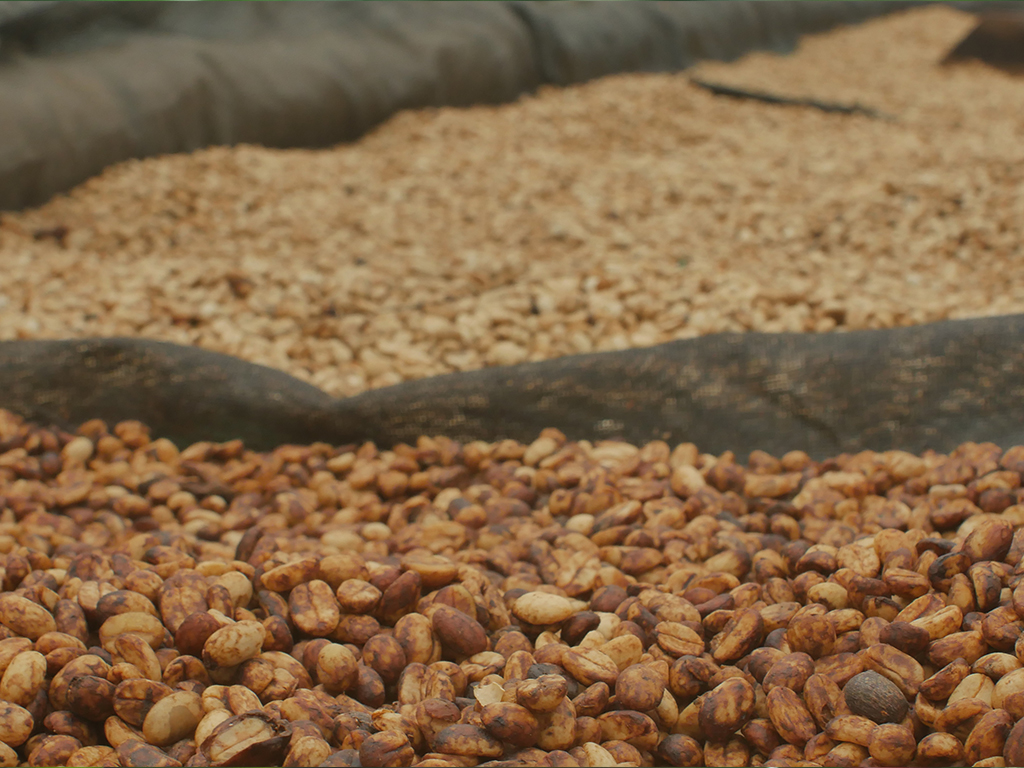Shopping Bag
0
- No products in the cart.

If there was more about coffee that was cut-and-dry, it wouldn’t be as interesting, right? And if all processing was ultimately cut-and-dry, we wouldn’t have any washed coffees or pulped naturals — and just forget about honeys.
Instead, part of what makes the myriad flavors and characteristics that we enjoy from place to place and lot to lot are the incremental variations to method, philosophy, and, yes, process. In this piece, we’ll explore the family of coffee processing methods called honey, and examine some of the history, applications, motivations, deviations, and classic characteristics that come along with it.
What Makes a Honey?
As with most “definitions” in coffee — as in most of agriculture-based food production — there are a lot of footnotes, endnotes and parentheticals. Simply put, a “honey” is a coffee that has been depulped but left to dry in its mucilage, the sticky fruit coating that lives just underneath the coffee cherry’s skin, or pulp. Often, the honey itself will be classified by color, such as white honey, or yellow, red, or black. What exactly determines the color of the honey will vary, and we’ll touch on that more specifically in a moment. First, a mini history lesson!
Honey History
If the description of honey processing above smacks as being reminiscent of the classic Brazilian pulped natural style, well, you must be paying attention. That’s the skin-off-fruit-on drying technique, popularized in the 1970s in Brazil as a means of conserving water and creating bigger-bodied coffees while simultaneously speeding up the drying process (and thereby speeding up the payment process).
Outside of Brazil, few places have utilized this sort of in-between style: In Ethiopia, coffees are either washed or natural; Kenyan coffees’ longer fermentation and occasional second soak count for something closer to washed in the end; and the semi-washed, or wet-hulled, process of Indonesia is a slightly different beast altogether. And, as with most of those various post-harvest approaches, there is a meteorological method to the madness. That is to say, the climate is typically the greatest influencer when it comes to a producer’s or a mill’s decision to go with one way over the other.
This is certainly true in the case of honey process and its famous place of origin: Costa Rica. As a matter of fact, Costa Rica was one of the first countries to modernize the washed process, building the earliest washing stations and wet mills in the middle of the 20th century. Costa Rican “milds” became a standard-bearer for washed coffees, with their clean toffee sweetness and subtle lemon acidity embodying the idea of an easy-drinking “breakfast” coffee.
That began to change in the 2000s, specifically after a 2008 earthquake rocked the country into an extreme water shortage, which left coffee producers holding the bag — literally, there was no way to process their coffee without water, or so they thought. Looking for an alternative in this state of emergency, creative producers — notably Oscar and Francisca Chacon of Las Lajas Micromill — realized that in Africa and Brazil they have adapted processing techniques that don’t rely on water, and they attempted to modify their approach in a similar way.
Today, most mills that produce honey coffees use depulping machines or demucilaging machines that are calibrated to remove the skin from the fruit as well as some, if not all, of the mucilage. The coffee is then dried before being hulled, sorted, and prepared for export. If any water is used at all, it is a fraction of what washing requires — and strict water-conservation regulations enforced by the Costa Rican government and coffee association have also increased the interest that producers and, as a result, consumers, have in this adaptive process.
Read the full article with images:
https://dailycoffeenews.com/2017/12/04/honey-process-get-to-know-this-sweetheart-of-specialty-coffee/
Free Shipping On All Orders $200+ |
